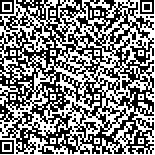下载中心
优秀审稿专家
优秀论文
相关链接
摘要

将人不可及的观测统称为遥感,使地面传感器成为遥感的一部分.提出遥感科学与技术的基本内容,包括传感器研制、遥感数据获取、数据处理、信息提取和应用5个部分.其理论基础是辐射传输过程模拟与反演,贯穿于各个组成部分.数据的可视化及传输发布存在于从数据获取到应用的各个环节.遥感科学与技术正处于快速发展时期,各个方面都有前沿问题.辐射传输理论中的尺度和多角度问题,地形对辐射和图像几何影响及相应的多源多时相数据的匹配问题,遥感信息提取中自动化和目视解译的结合以及信息提取新策略问题,遥感与基于过程模拟的气候一水文-生态模式相结合的四维数据同化技术等是当前遥感科学与技术发展中的重要学科前沿.四维数据同化技术是突破遥感瞬时信息获取、实现图像与机理模型有机结合、改善自身数据产品质量和促进地学大范围模拟准确性的重要发展方向,能增强遥感对全球变化科学的贡献.
In this paper, I propose a personal view on the general contents of remote sensing science and technology, which includes sensor research and manufacturing, remotely sensed data acquisition, data processing, information extraction and remote sensing applications. Serving as the basis for all these components is radiative transfer process modeling and inversion. Also of importance is the effective visualization of remotely sensed data and their efficient distribution to end users. In all these areas, there are critical research questions. In particular, I consider 4 fundamental areas for improved application of remote sensing. These include the scale and angular issues in remote sensing, removal of topographic effects on the radiance and geometry of remotely sensed imagery and the related question of multisource and multitemporal data registration, integrating knowledge and remotely sensed data into effective information extraction, and four dimensional data assimilation techniques. Strategies of information extraction can be broadly divided into manual visual analysis and computer-based analysis. The computer based information analysis include radiative transfer model inversion, image classification, regression analysis, three dimensional information extraction, shape analysis and change detection. Successful information extraction is the key to the success of remote sensing. There are many important issues that need to be solved including how to make better use of the spatial and temporal data present in remotely sensed data in information extraction. How to effectively combine the strength of both computer analysis and human interpretation? Finally, 4D data assimilation is the new direction that allows for the integration of instantaneous observation with process-based climate, hydrological and ecological models. Further work along this direction will enhance the contribution of remote sensing in global change studies. In return, the quality of remotely sensed parameters can be improved.

